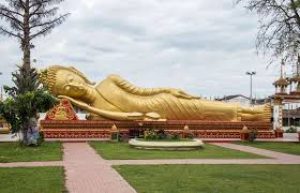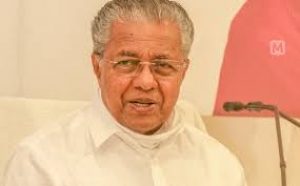
Current Affairs is the most important area in all competitive exams. But the difficulty level is very high. That’s why; many aspirants get confused, how to select Current Affairs for Preparation of Competitive Examination? Here we have tried to cover each and every point and also included all important facts from National/ International news that are useful for upcoming competitive examinations such as SSC, Railway, State Govt. etc.
Daily Current Affairs 28 May 2021
In today’s Daily Current Affairs 28 May 2021, we will discuss about the one-stop centres, ACCR Portal and 3rd version of Ayush Sanjivani App, The number of smokers worldwide, Reclining of Buddha and his various other depictions in art, City of Tulsa in Oklahoma State, toll plazas, Assets under Management under Pension Fund Regulatory and Development Authority and many more.
Centre plans one-stop centres in 9 countries to help women hit by violence

The Ministry of Women and Child Development (WCD) announced to set up One-Stop Centres (OSC) which aimed at supporting women affected by violence in public and private spaces, in foreign missions in collaboration with the Ministry of External Affairs.
The first 10 OSCs will be introduced in Australia, Canada, Singapore, Bahrain, Kuwait, Oman, Qatar, UAE, and Saudi Arabia.
Senior officials in the ministry pointed out that the countries have been identified by the MEA based on the Indian diaspora population and that these centres will be run by the MEA.
There are currently 700 One-Stop Centres in the country. The WCD Ministry plans to add 300 more such centres across the country this year.
The ministry also announced a fund of Rs 74 crore under the Nirbhaya fund for rape victims who are minors.
Government launched ACCR Portal and 3rd version of Ayush Sanjivani App

Ayush Ministry recently launched the Ayush Clinical Case Repository (ACCR) portal and the third version of AyushSanjivani App.
This portal aims to aggregate information about clinical outcomes achieved by Ayush practitioners on a large scale. It is expected to document the strengths of Ayush systems for treatment of various disease conditions.
One notable feature of the ACCR portal is the dedicated section for reporting and publishing details of Covid 19 cases treated through Ayush Systems.
The Ayush Sanjivani App (Third Version) is now published on Google Play Store and iOS.
This version facilitates a significant study/ documentation regarding the efficacy of selected Ayush interventions, including Ayush 64 and Kabasura Kudineer medicines in the management of asymptomatic & mild to moderate Covid 19 patients.
The number of smokers worldwide has increased to 1.1 billion in 2019

With tobacco smoking causing 7.7 million deaths, including 1 in 5 deaths in males worldwide it was reviled that the number of smokers worldwide has increased to 1.1 billion in 2019.
China (26·5 million), India (19·8 million), and Indonesia (9·91 million) are among the top three countries with the largest numbers of current tobacco smokers aged 15–24 years in 2019 and accounted for 55·9% of total tobacco smokers in this age group.
In 2019, global prevalence of smoking tobacco use among males aged 15-24 years was 20.1 %% and among females was 4.95%. In 2019, an estimated 155 million individuals aged 15–24 years globally were tobacco smokers.
In 2019, smoking was associated with 1.7 million deaths from ischaemic heart disease, 1.6 million deaths from chronic obstructive pulmonary disease, 1.3 million deaths from tracheal, bronchus, and lung cancer, and nearly 1 million deaths from stroke.
Of particular concern are the persistently high rates of smoking among young people, with over half of countries worldwide showing no progress in reducing smoking among 15-24 year olds. 89% of new smokers become addicted by age 25.
The study have been published in The Lancet and The Lancet Public Health journals by the Global Burden of Disease collaboration.
Indian youth are now marrying later in life

The Indian youth too are being influenced by recent trends. Compared to a decade ago, youth are now marrying later in life. Lokniti-CSDS Youth Studies in 2016 and 2007 show the proportion of married youth decreased by eight percentage points from 55% in 2007 to 47% in 2016.
As one would expect, the data highlight that a much higher share of young men were unmarried (61%) compared to women (41%).
Educational attainment too is an important factor associated with marriage. One observes a decline in the proportion of married youth with successive levels of education.
In an age of online dating, growth of social networking and matrimonial sites, arranged marriages are still a preferred choice: 84% of the married youth in 2016 said their marriage was decided by families and only 6% reported self-choice.
Unmarried youth too showed an inclination towards arranged marriages with 50% saying they would opt for this kind of marriage. Only 12% said they would opt for self-choice marriage. Surprisingly, the 2016 study indicates that a mere 3% of youth had placed a matrimonial advertisement.
The study also showed that 31% of the youth said their parents will have or had a lot of influence on their marriage decision. This influence was greater for women (35%) than men (28%).
Moreover, data from a recent study, ‘Politics and Society between Election’, show there is some change in attitudes — if not in practice — when it comes to decision-making for women in marriage: 72 % support women’s say in when to get married and 74 % in whom to marry.
Reclining of Buddha and his various other depictions in art

India’s largest statue of the Reclining Buddha was to have been installed at the Buddha International Welfare Mission temple in Bodh Gaya on the event of Buddha Jayanti.
The giant 100-foot fibreglass statue, built over three months by a team of 22 artisans in Kolkata, remains a fascinating work of art, as much for its size as for the way The Buddha has been depicted.
The Buddha during his last illness, about to enter Parinirvana, the stage of great salvation after death that can only be attained by enlightened souls.
The Buddha’s death came when he was 80 years old, in a state of meditation, in Kushinagar in eastern Uttar Pradesh, close to the state’s border with Bihar.
Statues and images of the Reclining Buddha show him lying on his right side, his head resting on a cushion or on his right elbow.
It is a popular iconographic depiction in Buddhism, and is meant to show that all beings have the potential to be awakened and be released from the cycle of death and rebirth.
Dr Manwatkar said that in Sri Lanka and India, the Buddha is mostly shown in sitting postures, while the reclining postures are more prevalent in Thailand and other parts of South East Asia.
The largest Reclining Buddha in the world is the 600-foot Winsein Tawya Buddha built in 1992 in Mawlamyine, Myanmar.
US President to visit the city of Tulsa in Oklahoma State

US President Joe Biden will visit the city of Tulsa in Oklahoma state, in honour of the 100th anniversary of the Tulsa race massacre, known among the worst incidents of racial strife in American history.
In 1921, from the evening of May 31 until the afternoon of June 1, a violent mob of Tulsa’s White residents attacked a prosperous Black neighbourhood, killing hundreds and leaving the locality in ashes.
Last year, former President Donald Trump had visited Tulsa during his reelection campaign, but sparked controversy after his rally was initially planned on June 19, or ‘Juneteenth’, a holiday marking the end of slavery in the US.
The massacre took place in Greenwood, a thriving Black-dominated neighbourhood that had sprung up at the start of the 20th century on the northern side of Tulsa, separated by a railroad track from the city’s White-dominated part on the south.
Known as the “Black Wall Street”, Greenwood was a favoured destination for African Americans from the Southern US states– where laws actively upheld racism and disempowered Black people– to come and seek upward mobility.
The visit by a US president on the occasion is being read as a signal to acknowledge the race massacre, whose history has long been suppressed and left out of national memory.
Waiting time should not more than 10 seconds per vehicle at toll plazas

The National Highways Authority of India (NHAI) has issued guidelines that ensure service time of not more than 10 seconds per vehicle even during peak hours at the toll plazas on the National Highways to enhance smooth and quick passage of vehicles.
NHAI has successfully transitioned to 100% cashless tolling from the middle of February 2021, the overall FASTag penetration at NHAI Toll Plazas has reached 96% and stands at 99% at many toll plazas.
As per the Ministry of Road Transport & Highways, the new guidelines will also ensure seamless flow of traffic at the toll plazas by not allowing vehicles to queue up more than 100 metres.
Although at most of the toll plazas, there is no waiting time after mandatory 100% Fastag, even then if there is a queue of waiting vehicles of more than 100 metres due to some reason, the vehicles will be allowed to pass without paying toll till the queue comes within 100 metres from the toll booth.
For this purpose, a yellow line at a distance of 100 metres from the toll booth will be marked in each toll lane. This is to inculcate a further sense of accountability in toll plaza operators.
Assets under Management under Pension Fund Regulatory and Development Authority

The Pension Fund Regulatory and Development Authority (PFRDA) recently announced crossing the milestone of Rs 6 lakh crore (Rs 6 trillion) of Assets Under Management (AUM) under the National Pension System (NPS) and Atal Pension Yojana (APY), after 13 years.
The AUM growth of last Rs 1 trillion has been achieved in just 7 months.
PFRDA has witnessed remarkable growth in NPS subscribers over the years with 74.10 lakh government employees in the scheme and 28.37 lakh individuals joining from the non-government sector.
The total subscriber base of PFRDA has increased to 4.28 crore. As on 21st May 2021, the total number of subscribers under NPS and Atal Pension Yojana has crossed 4.28 crore and the Asset under Management (AUM) has grown to Rs 603,667.02 crore.
Intermediary Guidelines and Digital Media Ethics Code came into effect

The Intermediary Guidelines and Digital Media Ethics Code, simply known as the new rules for social media platforms and digital news outlets came into effect.
The guidelines had asked all social media platforms to set up a grievances redressal and compliance mechanism, which included appointing a resident grievance officer, chief compliance officer and a nodal contact person.
The Ministry of Electronics & Information Technology had also asked these platforms to submit monthly reports on complaints received from users and action taken.
A third requirement was for instant messaging apps was to make provisions for tracking the first originator of a message.
Failure to comply with any one of these requirements would take away the indemnity provided to social media intermediaries under Section 79 of the Information Technology Act.
According to the Section 79, any intermediary shall not be held legally or otherwise liable for any third party information, data, or communication link made available or hosted on its platform.
This protection, the Act says, shall be applicable if the said intermediary does not in any way, initiate the transmission of the message in question, select the receiver of the transmitted message and does not modify any information contained in the transmission.
Panel to probe allegations of unauthorised construction in Mekedatu

A joint committee has been appointed by the National Green Tribunal (NGT), Southern Zone to look into allegations of unauthorised construction activity taking place in Mekedatu, where the Karnataka government had proposed to construct a dam across the Cauvery River.
Acting suo motu based on a media report, the NGT has directed the panel to submit a report on or before July 5.
The Mekedatu multi-purpose project involves building a balancing reservoir across the Cauvery River near Kanakapura in Ramanagaram district.
It envisages supplying drinking water to Bengaluru and Ramanagaram districts, besides generation of power.
The project was conceived in 2013 and in 2017, the Karnataka state cabinet decided to implement it. The project, however, ran into a controversy after Tamil Nadu opposed it on the grounds that the project violates the Cauvery Water Disputes Tribunal award.
Kerala to launch the Smart Kitchen scheme

The state government of Kerala recently announced to launch of the Smart Kitchen scheme and a secretary level committee will formulate guidelines and recommendations on implementation of “Smart Kitchen Scheme” in state to fulfil commitments of LDF.
The Kerala State Financial Enterprises (KSFE) may start a chit fund scheme for the state government’s ‘Smart Kitchen’ project, meant to ease the burden on housewives.
The aim is to ensure home appliances in every household. Women could pay for the appliances in instalments over a period of few years. Various packages would be prepared for this purpose.
The ‘Smart Kitchen’ project was promised in the LDF election manifesto and in the previous State budget.
The manifesto had stated that the LDF’s plan to make Kerala the first State to have washing machines, grinders and refrigerators in all households, in that order.
Aashritha V Olety becomes the India’s 1st woman flight test engineer

Squadron Leader Aashritha V Olety is the first and only woman in the IAF qualified for the role, and as a flight test engineer.
Olety, a native of Karnataka, has graduated as part of the 43rd Flight Test Course after completing a one-year course at the pilot school.
Excluding the medical wing in which women have been serving for decades, the army accounts for 6,807 women officers, the IAF 1,607 and the navy has 704 women officers.
In percentage terms, women still form a small part of the military – 0.56% of the army, 1.08% of the air force and 6.5% of the navy.
I hope these Daily Current Affairs 28 May 2021 are useful to you. These current affairs covers all the topics you should know for your upcoming competitive examinations. I compiled these current affairs today from various news outlets including The Hindu, Indian Express, Live Mint as well as various authentic sources including PIB report, Down to earth magazine, Yojana, and Kurukshetra.





